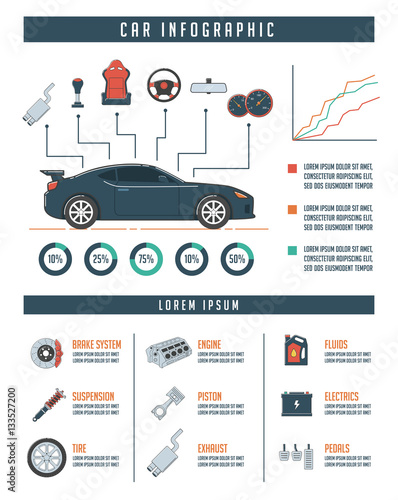Interpreting Your Car'S Alert Lights: Their True Effects
Interpreting Your Car'S Alert Lights: Their True Effects
Blog Article
Authored By-Sykes Alvarado
When you lag the wheel, those glowing caution lights on your control panel can be a bit puzzling. Do you recognize what they're trying to inform you concerning your car's health? Understanding the relevance of these lights is essential for your safety and the longevity of your lorry. So, the following time among those lights turns up, wouldn't you wish to understand its message precisely and take the essential steps to address it?
Common Warning Lights and Interpretations
Recognize usual caution lights in your cars and truck and recognize their significances to guarantee safe driving.
The most typical caution lights consist of the check engine light, which signifies problems with the engine or emissions system. If this light begins, it's important to have your lorry examined quickly.
The oil stress warning light shows low oil pressure, calling for instant interest to stop engine damage.
A flashing battery light might recommend a defective billing system, possibly leaving you stranded otherwise attended to.
The tire stress monitoring system (TPMS) light informs you to reduced tire stress, impacting automobile stability and fuel effectiveness. Neglecting this could bring about hazardous driving conditions.
The ABS light indicates a problem with the anti-lock stopping system, compromising your ability to stop quickly in emergencies.
Last but not least, the coolant temperature level alerting light warns of engine getting too hot, which can lead to extreme damage otherwise dealt with swiftly.
Recognizing these usual caution lights will certainly assist you deal with issues without delay and keep safe driving conditions.
Relevance of Prompt Interest
Understanding the common warning lights in your cars and truck is just the initial step; the importance of immediately addressing these warnings can not be emphasized sufficient to guarantee your security when traveling.
When a warning light illuminates on your control panel, it's your cars and truck's means of connecting a prospective issue that requires attention. Neglecting these cautions can cause a lot more severe issues later on, jeopardizing your safety and possibly costing you much more in repairs.
Trigger attention to alerting lights can prevent break downs and accidents. As Learn Additional Here , a blinking check engine light might indicate a misfire that, if left ignored, could create damage to the catalytic converter. Addressing this immediately can conserve you from a pricey repair work.
Likewise, a brake system warning light may signal low brake fluid or worn brake pads, important components for your safety and security when driving.
DIY Troubleshooting Tips
If you discover a caution light on your dashboard, there are a couple of DIY fixing pointers you can try prior to seeking expert aid.
The first step is to consult your car's guidebook to understand what the particular caution light suggests. Occasionally the concern can be as easy as a loosened gas cap activating the check engine light. Tightening up the gas cap may fix the problem.
Click That Link is a low battery, which can activate various warning lights. Examining the battery links for deterioration and ensuring they're safe might fix the issue.
If a caution light lingers, you can try resetting it by separating the auto's battery for a couple of minutes and afterwards reconnecting it. Additionally, checking your lorry's fluid degrees, such as oil, coolant, and brake fluid, can assist fix advising lights associated with these systems.
Conclusion
To conclude, recognizing your automobile's caution lights is crucial for keeping your vehicle running efficiently and safely. By without delay addressing these informs and understanding what they mean, you can avoid expensive repair services and possible breakdowns.
Remember to consult your vehicle's guidebook for specific information on each alerting light and do something about it appropriately to ensure a trouble-free driving experience.
Stay informed, remain secure when driving!
